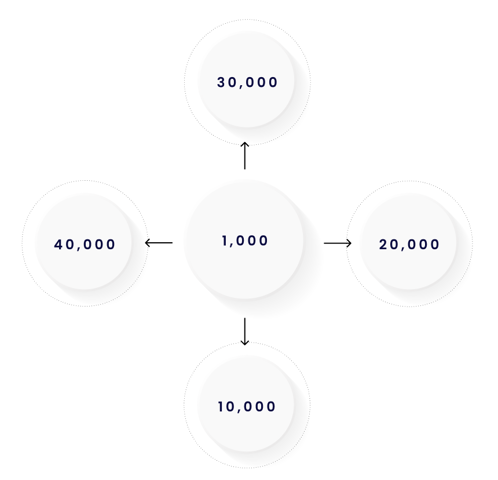- Accounts & Connection Management
- Data Management & Analysis
- Price Monitoring
- Charting
- Trading
- Scanners
-
Builders
-
Manual Strategy Builder
- Main Concept
- Operand Component
- Algo Elements
-
Use Cases
- How to create a condition on something crossing something
- How to create an indicator based on another indicator
- How to calculate a stop loss based on indicator
- How to submit stop order based on calculated price
- How to calculate a current bar price using a price type from inputs
- How to Use a Closed Bar Price
- Automatic Strategy Builder
-
Manual Strategy Builder
- Autotrading
- FinScript
- Trade Analysis
- Media Feeds
- Logs & Notifications
- UI & UX
This virtual account setup involves copying trades from a signal provider's main account to the accounts of subscribers. The standard trade quantity on the provider's account is replicated to subscriber accounts in accordance with predefined money management rules.

The signal provider's account serves as the primary trading account, and all trades executed on this account are simultaneously executed on the subscriber accounts. Unlike the Merged Accounts and Subaccounts model, in this setup, accounts remain separate and independent, with trades merely being copied from the main to the subscriber accounts.
Even if the signal provider's account has a balance of $50,000 and the subscribers' accounts have balances of $20,000 and $10,000, the balances remain unchanged post-trade—the provider's balance stays at $50,000, and the subscribers' balances stay at their original amounts of $20,000 and $10,000, respectively.
Allocation Methods
Users can select how the trade volume (or position size) is allocated from the provider's account to the subscribers' accounts. We offer two primary methods: percent allocation and lot allocation. Additionally, a third option—Money Management Methods—allows users to choose from various position sizing strategies.
Percent Allocation
This method distributes a specified percentage of a trade from the provider's account to the subscriber's accounts. For instance, if a 4-lot trade is placed on the provider's account, and subscriber Account A is set to a 60% allocation while subscriber Account B is set to 40%, then Account A would receive a 2.4-lot trade and Account B a 1.6-lot trade.
| Provider's Account | 4 lots (100%) |
| Subscriber's Account A | Subscriber's Account B |
| Percent Allocation = 60% | Percent Allocation = 40% |
| Resulting Trade Size = 2.4 lots | Resulting Trade Size = 1.6 lots |
Coefficient Allocation
This method enables subscribers to apply the same money management principles to their accounts as the trader does on the master provider account. Consider a scenario where the provider's account balance is $10,000, and there are three subscriber accounts with balances of $100,000, $500,000, and $10,000, respectively. When the trader executes a trade of 1 standard lot on the provider's account, this trade is replicated across all subscriber accounts but adjusted according to a specific coefficient assigned to each. For example, with a coefficient of 1 on the $100,000 account, 2 on the $500,000 account, and 0.5 on the $10,000 account, the resulting trades would be 10 lots on the $100,000 account, 100 lots on the $500,000 account, and 0.5 lots on the $10,000 account.
|
Provider's Account 10,000 EUR Trade Size = 1 lot |
||
| Subscriber A 100,000 | Subscriber B 500,000 | Subscriber C 10,000 |
| Coefficient = 1 | Coefficient = 2 | Coefficient = 0.5 |
| Resulting Trade Size = 10 lots | Resulting Trade Size = 100 lots | Resulting Trade Size = 0.5 lots |
The calculation for this is straightforward: the subscriber's account balance divided by the provider's account balance, multiplied by the provider's trade volume and the set coefficient.

Money Management Methods
This approach disregards the provider's account balance, placing trades on the subscriber's account based on the settings of the selected money management method. Essentially, the same trade from the provider's account is executed on the subscriber's account, but the trade size is determined according to the chosen money management strategy.
- Accounts & Connection Management
- Data Management & Analysis
- Price Monitoring
- Charting
- Trading
- Scanners
-
Builders
-
Manual Strategy Builder
- Main Concept
- Operand Component
- Algo Elements
-
Use Cases
- How to create a condition on something crossing something
- How to create an indicator based on another indicator
- How to calculate a stop loss based on indicator
- How to submit stop order based on calculated price
- How to calculate a current bar price using a price type from inputs
- How to Use a Closed Bar Price
- Automatic Strategy Builder
-
Manual Strategy Builder
- Autotrading
- FinScript
- Trade Analysis
- Media Feeds
- Logs & Notifications
- UI & UX